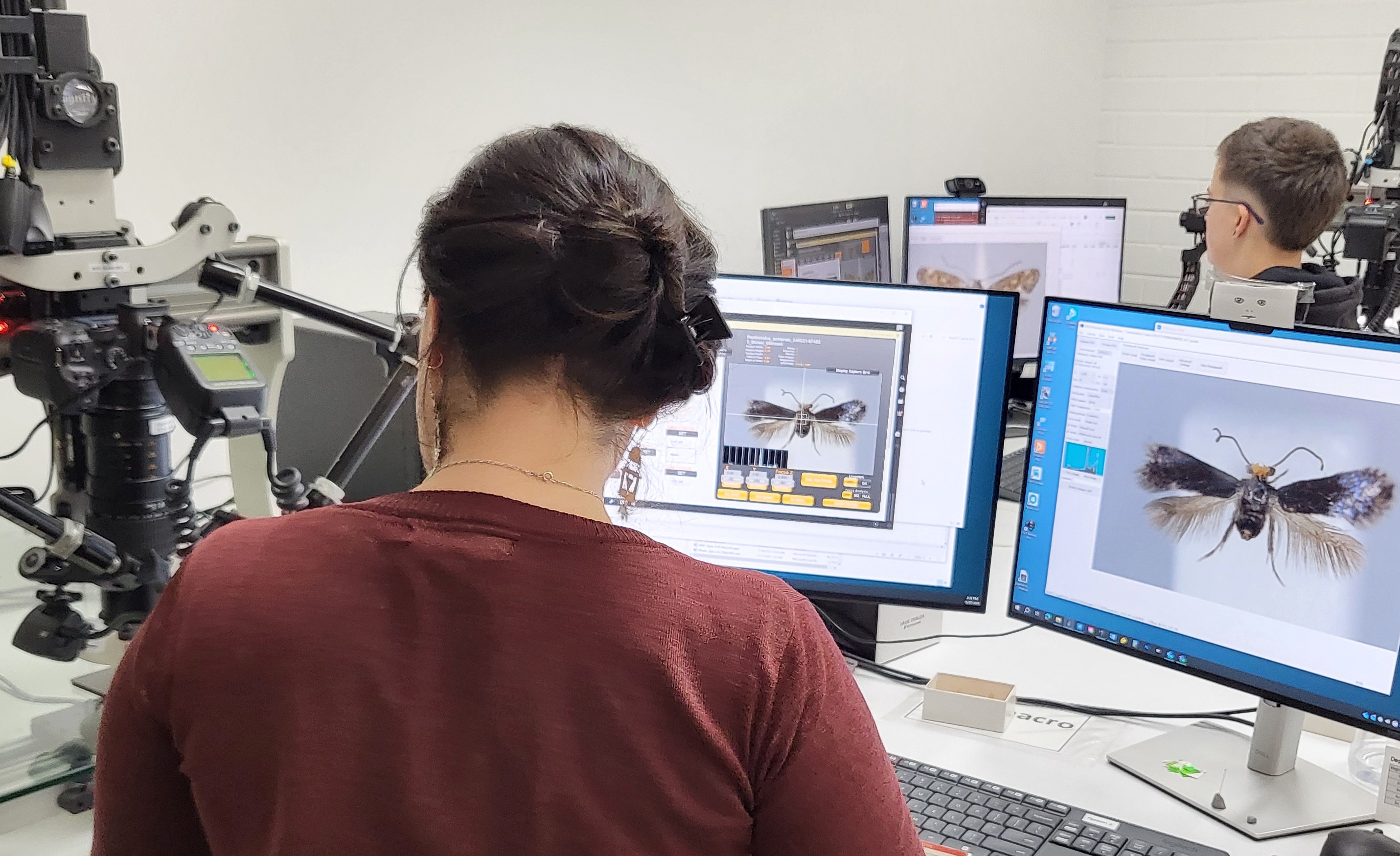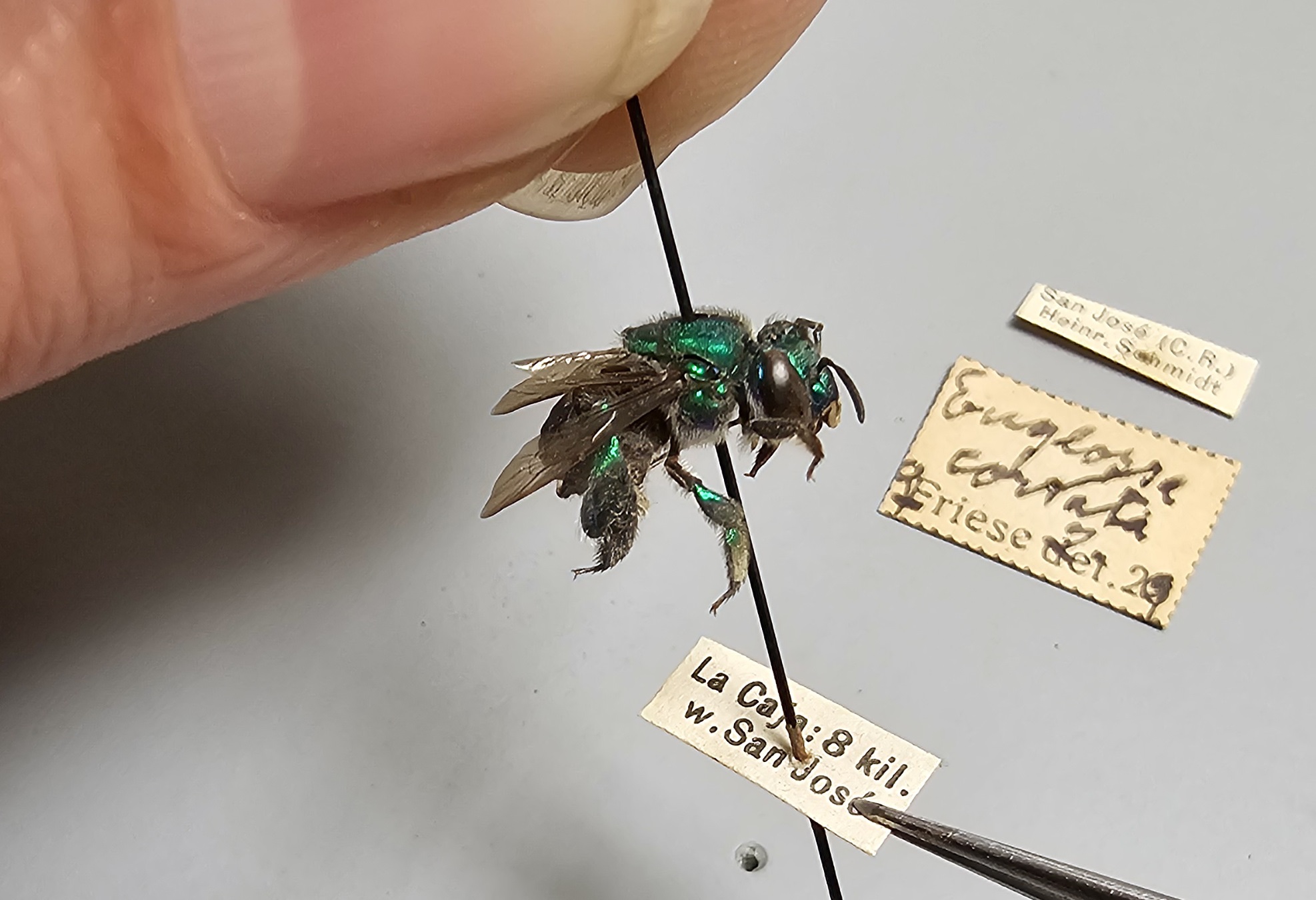Collections of international significance
Australia is host to more than half a million species of plants and animals. Three quarters of them can be found nowhere else on earth. Our biodiversity is both a treasure to behold and an economically valuable resource.
CSIRO's natural history collections contain more than 15 million specimens representing all major biological groups. They cover the entire Australian continent and marine zones and include native and introduced plants, terrestrial vertebrates, insects, fish, algae and tree seeds.
The collections contribute to national and international biological knowledge and underpin a significant part of Australia's taxonomic, genetic and ecological research.

Mobilising our natural history collections
We are digitising our collections to increase access for researchers and the general public.
Digitisation has many benefits, including:
- allowing us to share rich information to support biodiversity discovery, species identification and quarantine
- connecting Australians to their cultural and biodiversity heritage
- unlocking the billion dollar value investment already made in the 15 million plus specimens in our collections by making them more readily available to the world for science and innovation.
Digitising more than 15 million specimens is a mammoth task. Specimens in the collections include insects, birds, eggs, mammal bones, algal cultures, plant specimens, seed banks, images, sound recordings, DNA samples and metadata - the information associated with each specimen about where and when it was collected.
Accelerating and enhancing digitisation of our collections
Natural history collections are one of the largest untapped data sources in the world, offering insight into everything from our climate, food and industry to our culture, arts and society. The digitisation of our collections is accelerating to enable global access to the collections, transforming research capability and impact.

Our program of work involves:
- a particular focus on bringing our collections data together into one collection management system
- mass digitisation of the Australian National Herbarium, including the cryptogram collection and the Australian Tropical Herbarium
- digitisation of the egg collection held at the Australian National Wildlife Collection
- improved management and digitisation of the primary type specimens held in the Australian National Insect Collection
- developing infrastructure to enable open access to our data, including our collection images
- sampling and digitising specimens for DNA sequences available in the National Biodiversity DNA Library
- supporting Collaborative Curation & Collection Science to bring together human and machine intelligence for digitisation, curation and data integration and management.
Providing open access to our digitised collections
As we digitise our collections, we are making them available to the public and researchers through the CSIRO Data Access Portal and the Atlas of Living Australia, with both areas providing free, online access to a vast repository of information.
Collection images can be accessed on the CSIRO Data Access Portal as we continue to upload the specimen images we generate.
Collections of international significance
Australia is host to more than half a million species of plants and animals. Three quarters of them can be found nowhere else on earth. Our biodiversity is both a treasure to behold and an economically valuable resource.
CSIRO's natural history collections contain more than 15 million specimens representing all major biological groups. They cover the entire Australian continent and marine zones and include native and introduced plants, terrestrial vertebrates, insects, fish, algae and tree seeds.
The collections contribute to national and international biological knowledge and underpin a significant part of Australia's taxonomic, genetic and ecological research.
Mobilising our natural history collections
We are digitising our collections to increase access for researchers and the general public.
Digitisation has many benefits, including:
- allowing us to share rich information to support biodiversity discovery, species identification and quarantine
- connecting Australians to their cultural and biodiversity heritage
- unlocking the billion dollar value investment already made in the 15 million plus specimens in our collections by making them more readily available to the world for science and innovation.
Digitising more than 15 million specimens is a mammoth task. Specimens in the collections include insects, birds, eggs, mammal bones, algal cultures, plant specimens, seed banks, images, sound recordings, DNA samples and metadata - the information associated with each specimen about where and when it was collected.
Accelerating and enhancing digitisation of our collections
Natural history collections are one of the largest untapped data sources in the world, offering insight into everything from our climate, food and industry to our culture, arts and society. The digitisation of our collections is accelerating to enable global access to the collections, transforming research capability and impact.
Our program of work involves:
- a particular focus on bringing our collections data together into one collection management system
- mass digitisation of the Australian National Herbarium, including the cryptogram collection and the Australian Tropical Herbarium
- digitisation of the egg collection held at the Australian National Wildlife Collection
- improved management and digitisation of the primary type specimens held in the Australian National Insect Collection
- developing infrastructure to enable open access to our data, including our collection images
- sampling and digitising specimens for DNA sequences available in the National Biodiversity DNA Library
- supporting Collaborative Curation & Collection Science to bring together human and machine intelligence for digitisation, curation and data integration and management.
Providing open access to our digitised collections
As we digitise our collections, we are making them available to the public and researchers through the CSIRO Data Access Portal and the Atlas of Living Australia, with both areas providing free, online access to a vast repository of information.
Collection images can be accessed on the CSIRO Data Access Portal as we continue to upload the specimen images we generate.
